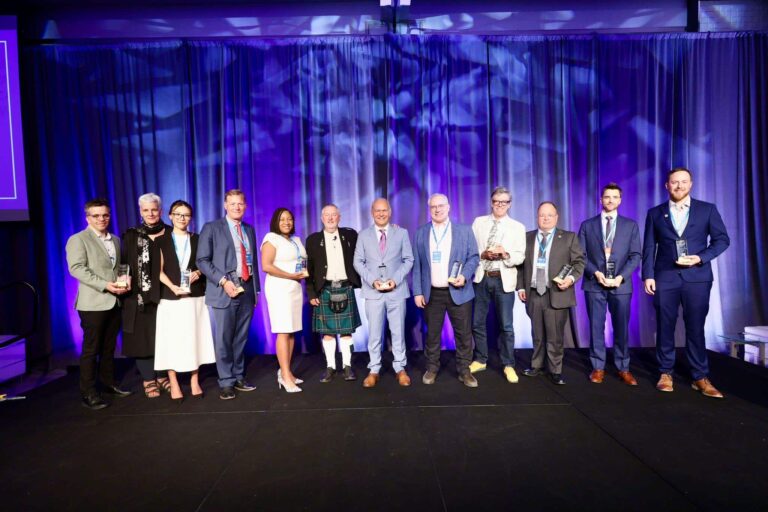Wednesday, July 2, 2025
As the first part of the 28th annual session of the International Seabed Authority (ISA) ends, debates about deep-seabed mining have raised a lot of concerns. A week after the session began, a group of Māori Greenpeace activists jumped in front of a deep-sea mining research boat, the UK Royal Research Ship James Cook.
So what is deep-sea mining and why is this underwater endeavor making so much noise?
Deep-seabed mining is basically the process of retrieving mineral deposits from the deep seabed. Despite widespread concern that it could severely damage marine biodiversity and ecosystems, there has been a drive from mining companies to initiate deep-seabed mining, due to increasing demand for metals, such as lithium, copper or nickel, and depleting terrestrial resources.
Mining companies – like the DEME Group based in Belgium – claim that “transitioning to clean energy is one of the key ways humankind can help combat climate change” and most of these technologies need metals like nickel, cobalt, manganese and copper.
“There can be no exploitation without regulations that ensure high environmental standards” underlined delegates during the opening remarks at the session of the ISA taking place in Kingston, Jamaica. A Canadian delegate stressed that deep-seabed mining “should only take place if protection of the marine environment is ensured,” including applying the precautionary approach.
Because the ISA is mandated to “organize, regulate, and control” all mineral-resource related activities in the seabed, ocean floor and the subsoil beyond the limits of national jurisdiction, the discussions during the session centred mostly around deep-sea mining.
Mining companies argue that drilling for mineral reserves on land is even more damaging to the planet’s stressed ecosystems, that focusing on digging up cobalt, nickel and manganese on land, will degrade the environment further.
Samantha Smith, the head of sustainability for the DEME Group, explains that “polymetallic nodules found on the seafloor of the Pacific Ocean in the Clarion Clipperton Zone contain nickel, cobalt, manganese and copper together. These metals are never found all together on land. We would need 2 to 3 mines to get the same amount of the different metals on land compared with one mine on the seafloor. Overall this means less mines and less processing facilities and, ultimately, less waste”.
For Rory Usher, the public relations manager at The Metals Company based in Vancouver, British Columbia, “there is no free lunch when it comes to transitioning from our current world to a world with no emissions”. He gives the example of nickel mined in Indonesia. “Mining on land impacts the health and well-being of human populations close to the mines, the animals and plants living in the rainforest that is being destroyed. Whereas deep-seabed mining doesn’t produce waste and the tailings are eliminated because of the very nature of this method.”
According to a recent study from the University of Massachusetts, approximately 92-98 per cent of sediment mobilised at the seafloor does not rise more than two metres above the
seafloor, suggesting that any toxic element would stay where it is.
But many environmental organizations question the narrative that metals in the sea are necessary for the required energy transition and advocate for recycling metals instead. In Usher’s opinion, recycling is not viable in the short term. “For instance, 5 to 7% of mined nickel is used for batteries, the rest goes to steel. This material won’t be recycled in the next 40 years. That means that we will need to inject new nickel in recycled nickel”, he explains.
On the other side of the argument, Greenpeace doesn’t want “any deep sea mining, ever”.
Greenpeace and other organisations are calling for a UN moratorium on deep sea mining. During the ISA session, some activists intercepted the research vessel, James Cook. Greenpeace claims that the research vessel is a “smokescreen” and that it forms part of the deep-sea mining industry’s development programme. “While world leaders talk, the industry stalks! The James Cook is a deep sea research vessel that is paving the way for a destructive industry,” posted the group on Instagram.
The James Cook, when it was intercepted by Greenpeace activists close to Costa Rica’s coasts, was returning from a seven-week expedition of the Pacific Ocean targeted for deep-sea mining. It went to sites where previous test mining took place in 1979 to monitor long-term impacts of mining but also to research how to reduce the risks as part of developing a sustainable approach to deep-sea mining. The activists requested the findings of the expedition but couldn’t access them.
Although the James Cook’s findings are not available to the public right now, a report published by Fauna & Flora, an international wildlife conservation organisation, reveals growing evidence of the risks associated with deep-seabed mining. The report states that the negative impacts of this process are likely to be extensive and irreversible. In other words, once lost, deep-sea biodiversity will be impossible to restore.
“The research analysed in our report clearly demonstrates that it remains premature for deep-seabed mining to proceed and, in the absence of any suitable, proven impact-avoidance or mitigation techniques, we are calling for it to be avoided entirely,” declared the global policy director of the organization, Catherine Weller.
“The predicted consequences and huge uncertainties associated with deep-seabed mining must not be ignored. Once initiated, deep-seabed mining and its effects may be impossible to stop.”
What does Usher say in response to that? “There are indeed some gaps in what is known about marine ecosystems at these depths but our knowledge about ecosystems on land where mining takes place is equally thin. The industry is researching safe ways to collect nodules without significantly harming the environment and TMC is currently analysing data gathered during a collector test it completed last year to provide definitive answers about its impacts.”
Enough or not enough research? No matter the answer to this question, it is the role of governments and the ISA to do the research and make informed decisions that won’t benefit business interests over the environment and human health.
For further coverage on the council session, visit: bit.ly/3yKd8jN

Andreia Portinha Saraiva is a freelance journalist from Switzerland currently spending time in Canada. EJ’s NextGen Perspectives column helps provide an inclusive look at the various youth voices involved in the environment industry.
Featured image: The Council of the International Seabed Authority opened the meetings of Part I of its 28th session on March 16. Image credit: ISA/Facebook.











